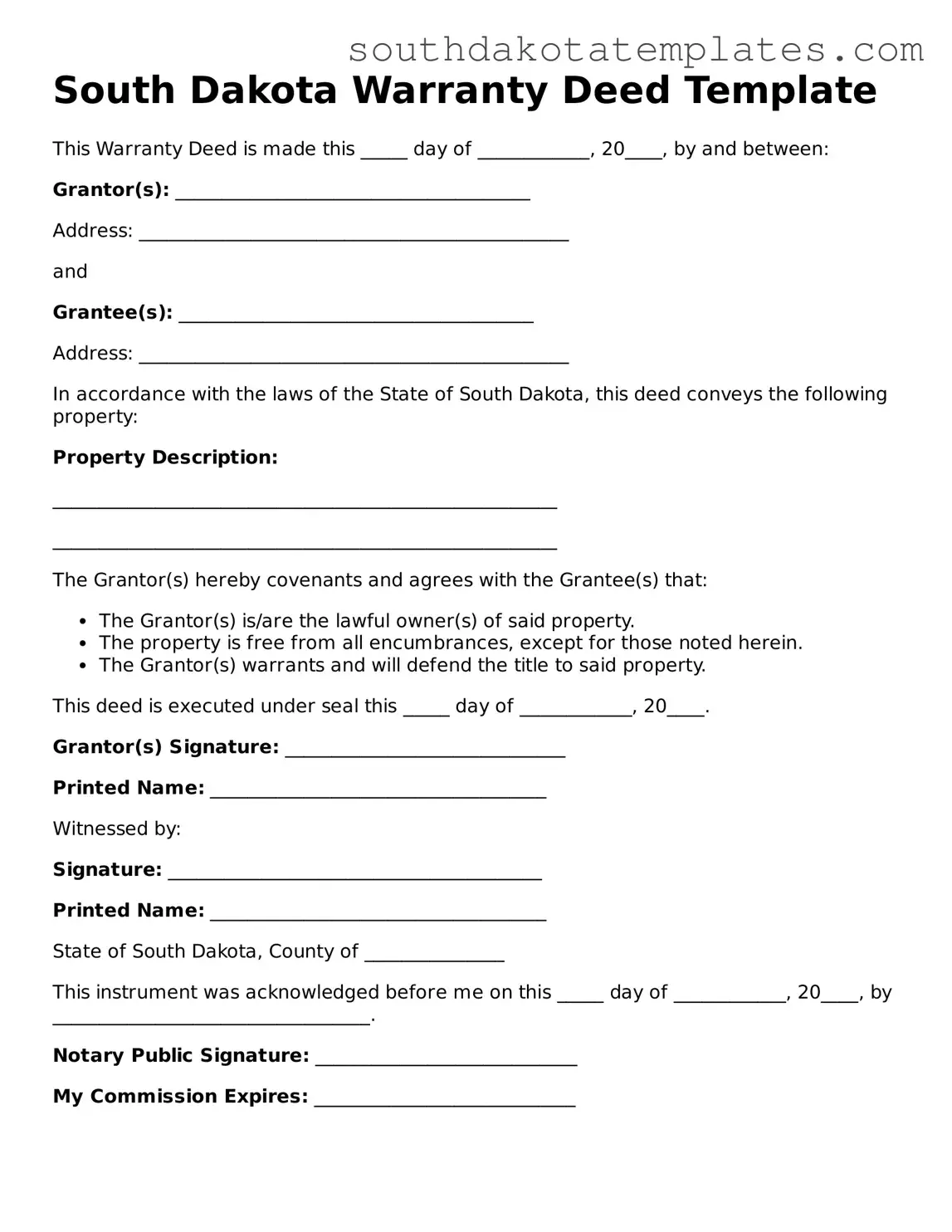Free South Dakota Deed Document
A South Dakota Deed form is a legal document used to transfer ownership of real property from one party to another. This form ensures that the transaction is recorded properly and provides a clear chain of title. Understanding the details of this form is essential for anyone involved in real estate transactions in South Dakota.
Ready to make your property transfer official? Fill out the South Dakota Deed form by clicking the button below.
Get Deed
